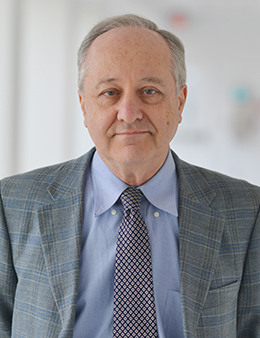 |
When the COVID-19 pandemic struck in early 2020, it placed strains on transportation systems that were not designed to accommodate disruptions at that scale. The effects, including broken supply chains, product shortages, and rising prices, are still with us today.
As UMD civil and environmental engineering professor Paul Schonfeld notes, tightly scheduled transfers have become the norm in freight transportation, and these tight connections depend in turn on a highly efficient and reliable transportation system. “When the transportation systems are disrupted, these supply chains can be quite badly degraded, leading to losses in production and insufficient supplies of goods that people need,” Schonfeld said.
 Although current systems factored in a certain degree of “normal” disruptions, they didn’t count on entire countries closing themselves down for extended periods, as happened at the height of the pandemic. “That created major, unforeseen upheavals,” Schonfeld said. “If all your products are manufactured locally, that’s more manageable. However, in the modern, globalized economy, products utilize components that are produced far away. When some countries closed their production facilities and their transportation systems, the effects were felt all over the world.” Although current systems factored in a certain degree of “normal” disruptions, they didn’t count on entire countries closing themselves down for extended periods, as happened at the height of the pandemic. “That created major, unforeseen upheavals,” Schonfeld said. “If all your products are manufactured locally, that’s more manageable. However, in the modern, globalized economy, products utilize components that are produced far away. When some countries closed their production facilities and their transportation systems, the effects were felt all over the world.”
This is not just a short-term problem. Whether in the form of public health crises, extreme weather conditions, natural disasters, geopolitical upheaval, or other high-impact events, the potential exists for future supply chain disruptions. In their current research, Schonfeld and his graduate students are looking for ways to introduce more resilience into the system.
“We’re working on how to restore a disrupted network as quickly as possible, as well as how to reduce the vulnerability of such a network to disruptions in the long term,” Schonfeld said. “How do you manage, schedule, and allocate resources and manage the work crews to restore the road and rail networks as quickly and efficiently as possible. How can we improve the resilience of that network to disruptions when you have years to invest in it? These are the kinds of problems we’re analyzing,” Schonfeld said.
It’s one of several research problems being studied by Schonfeld and his students; others include the efficient design o high-speed rail networks and the integration of multimodal systems to achieve greater synergies.
It’s important, Schonfeld says, to take a holistic view of transportation networks.
“I’m very interested in problems involving the development of these networks and their evolution over time,” Schonfeld said, “That requires analyzing interrelated alternatives. Almost anything that takes place in a transportation network affects other parts of the network, so when you make changes in one area, it’s important to consider the effects elsewhere. We’ve been working on problems like these as they relate to road, rail, inland waterways, and airports.”
Analyzing complex systems with an eye to optimizing them has been a common theme in Schonfeld’s work. A UMD faculty member since 1978, he has authored or coauthored more than 200 journal papers, examining various bottlenecks and vulnerabilities in the system and proposing solutions to improve them. His work has garnered international recognition; in December, for instance, Schonfeld was invited to deliver the opening presentation at the annual conference of the Chinese Institute of Transportation, held in Taipei.
“We hope that our work makes transportation systems more efficient and reliable, resulting in lower costs and environmental impacts, improved service quality, and better use of available resources,” he said. “Because nearly everything we do depends in some way on transportation, such improvements can have a tangible effect on society and on quality of life.”
December 22, 2022
|

